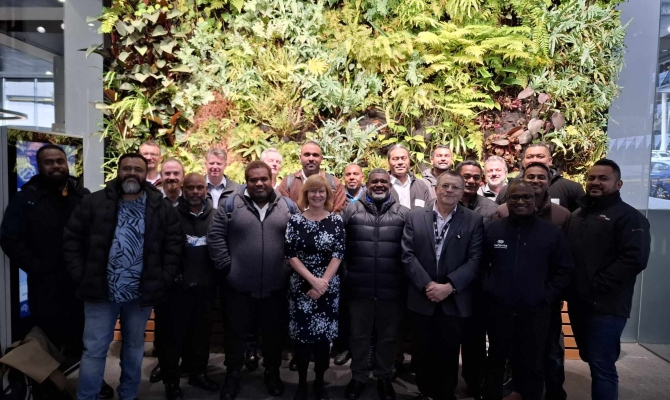
21 June 2024, Melbourne Australia - The development of a dedicated Pacific integrated forecasting platform to address some of the gaps in forecasting for extreme weather events was the focus of a gathering of forecasters from National Meteorological and Hydrological Services in Fiji, Papua New Guinea, Samoa, Solomon Islands, Tonga, and Vanuatu in Melbourne Australia from 12 – 14 June 2024.
The Chair of the Pacific Meteorological Council, Mr. Misaeli Funaki, who is also the Director of the Fiji Meteorological Services, said while this is a massive undertaking, it is also the beginning of an exciting journey to design something for the Pacific, by the Pacific, that would assist the NMHSs in providing accurate, timely, inclusive, actionable, and relevant information transmittable to the last mile.
“The Pacific region is vulnerable to a wide range of weather, climate, hydrological, ocean, and other related environmental extreme and high impact events such as tropical cyclone and typhoons, high waves and seas, earthquakes and volcanic eruptions, droughts, coastal inundation, and flash floods,” he continued.
According to Mr. Funaki, economic losses from cyclones and flooding in the South Pacific region in 2020 were estimated at approximately $1 billion, with more than 70 lives lost. Further, the risks posed by extreme events are increasing, as the Pacific region is particularly vulnerable to climate change, with a high likelihood of extreme events becoming more intense and frequent in the coming decades.
“As these extreme events increase in frequency and severity, we must ask ourselves whether we are doing enough to protect our communities,” he said.
While there has been significant investment in climate and climate change-related capacity and infrastructure over the past decade, the Pacific Meteorological community recognises that there are critical gaps in the area of the weather services, and the region’s observation network remains lacking compared to other regions of the world.
Similarly, the existing infrastructures and capacity to provide accurate information is not up to the global standard, and forecasting systems currently being used are highly variable in approach, meaning the pace at which the Pacific invests in new and up-to-date technologies to match the number of disasters is slow and not consistent.
“Presently, we do not have enough qualified meteorological and technical staff to develop and deliver accurate, localised, and impact-based forecasts and warnings. This creates challenges for us as NMHSs in providing the information needed by government, communities, and industries to better prepare for extreme events and manage the subsequent impacts on livelihoods and communities,” said Mr Funaki.
“We need an ambitious response to enable us as a region to better anticipate and respond to extreme events and their associated risks by enhancing capability to build a stronger platform for the region to manage the impacts of climate change, and equip countries with valuable information to inform adaptation and resilience strategies. The Weather Ready Pacific Decadal Programme of Investment, which was unanimously endorsed by the Pacific Island Forum Leaders in 2021, plans to do exactly that.
“The systems we develop will protect communities and our NMHSs and hopefully provide more specific forecasts and warnings about local weather conditions. Warnings will be clearer about potential impacts, enabling communities to make informed decisions.
“The human and financial cost of not acting is higher than the cost of acting through the Weather Ready Pacific Programme. I would like to thank the development partners for their foresight and contribution to this initiative, namely Australia, New Zealand, Japan, and the United Kingdom,” Mr. Funaki concluded.
For more information, please contact the Pacific Meteorological Desk Partnership at [email protected].